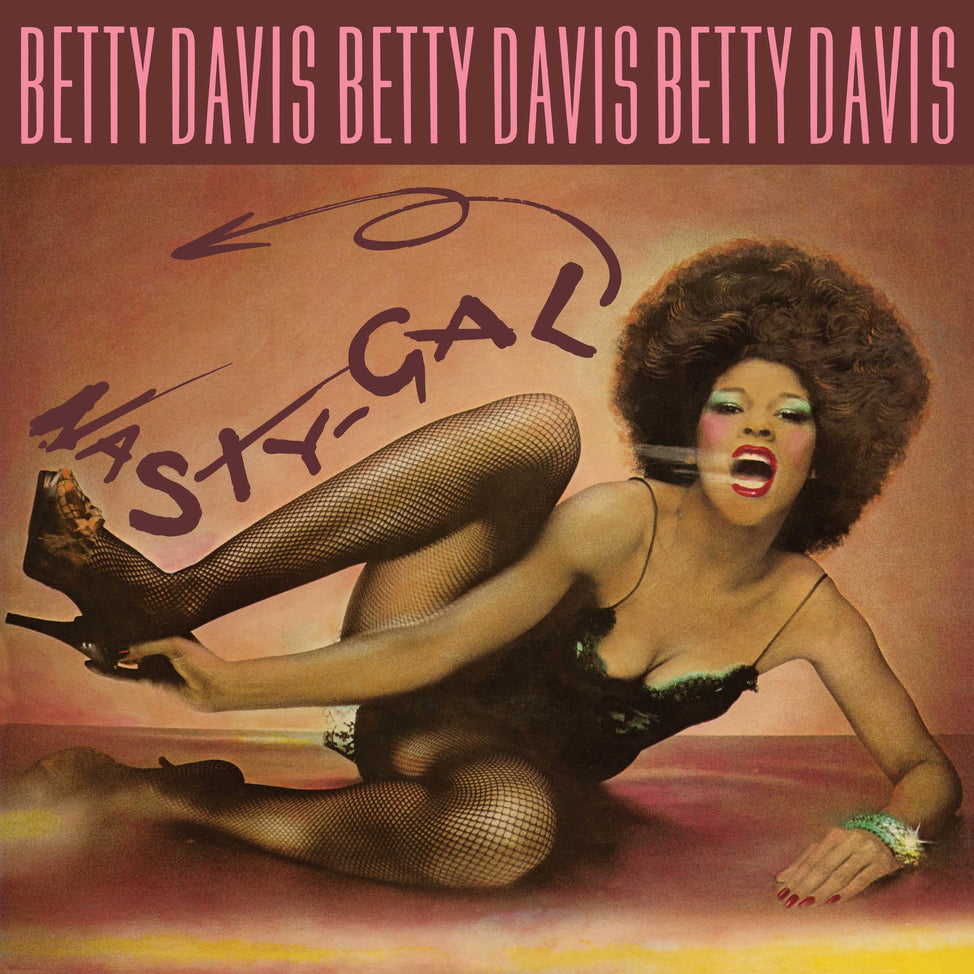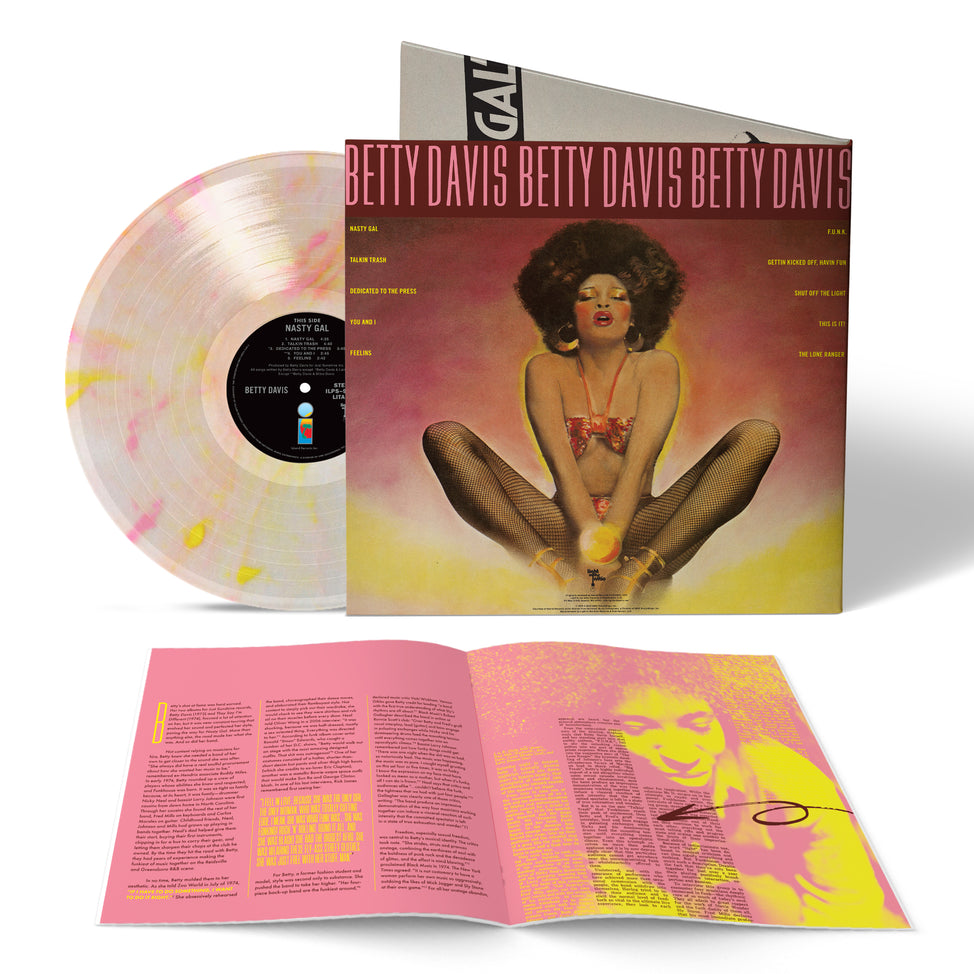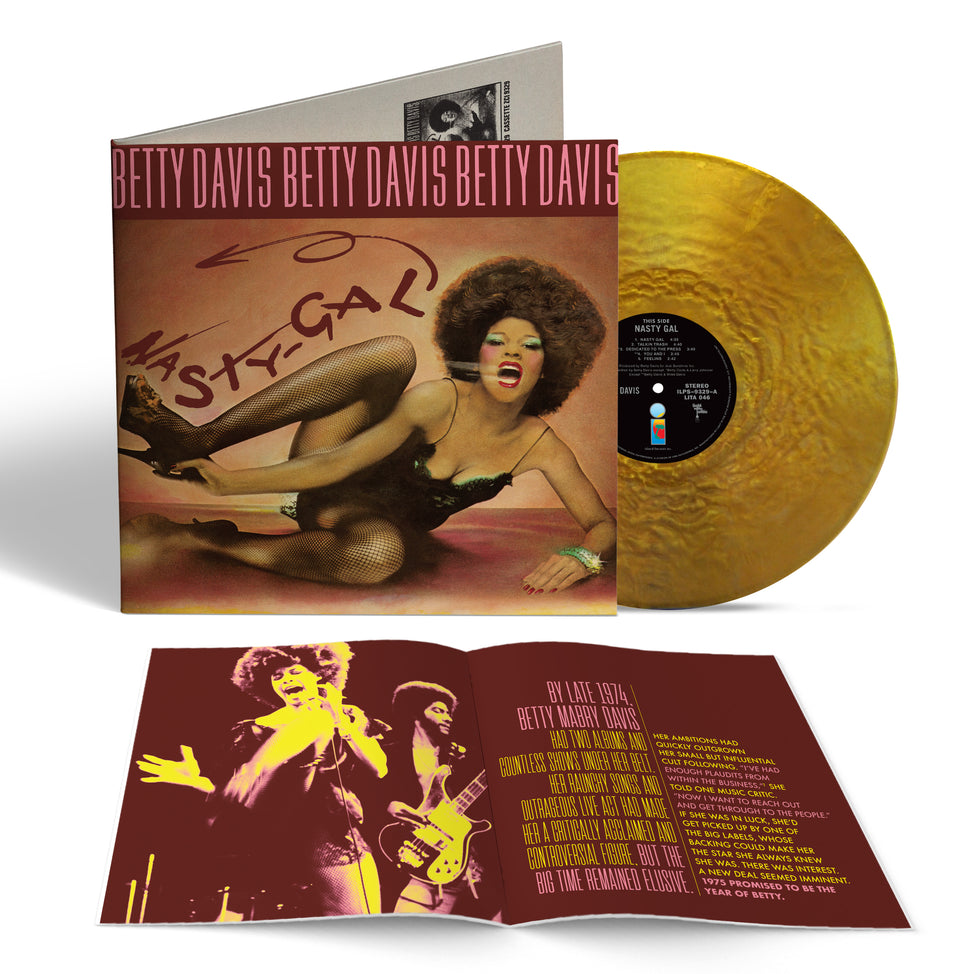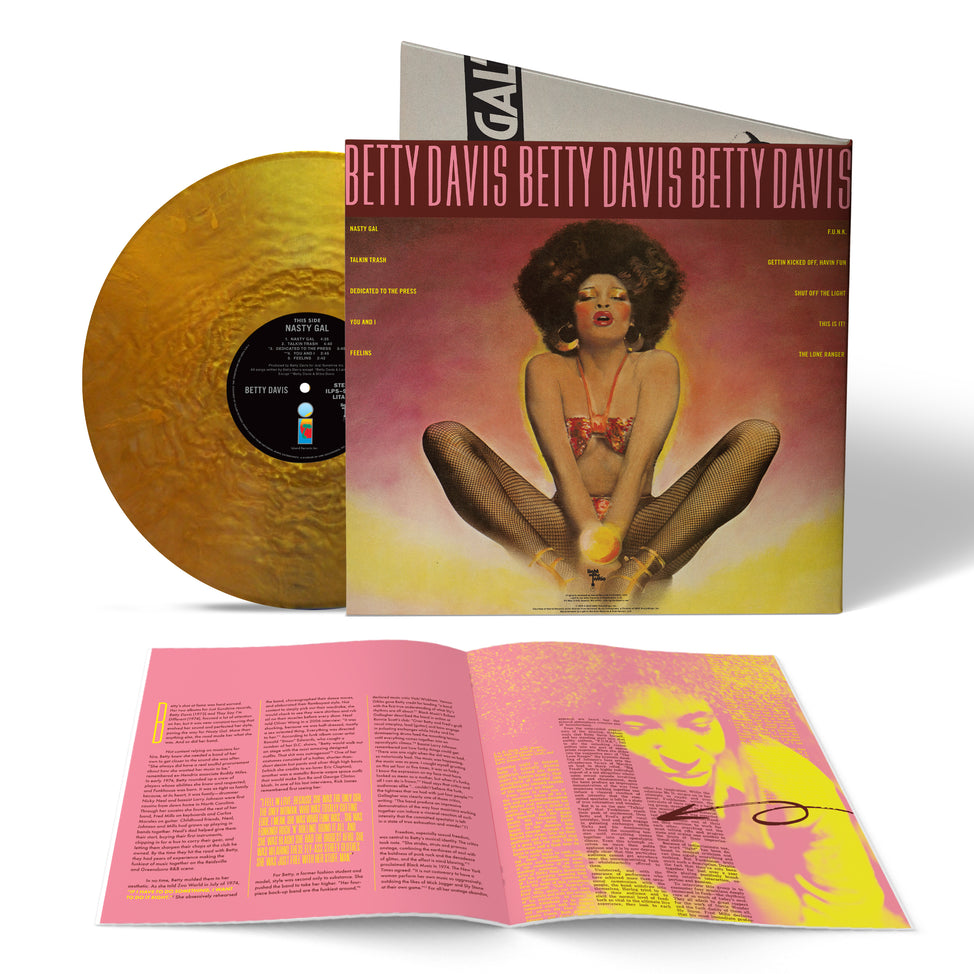There is one testimonial about Betty Davis that is universal: She was an artist ahead of her time. From her brief moment in the limelight to her decades of living as a recluse until her death in 2022, Betty Davis was a beautiful enigma. A drop-dead gorgeous model (and one of the first Black models to be featured in Glamour and Seventeen), Betty ran in crowds with Jimi Hendrix and was briefly married to Miles Davis (not to mention she played a large part in his stylistic radicalization). Her demure demeanor in life starkly contrasted with her onstage persona which oozed raw feminist liberation, a truly original punk-funk provocateur in her silver go-go boots and signature afro.
One can hardly imagine the genre-busting, culture-crossing, musical magic of Janelle Monáe, OutKast, Prince, Erykah Badu, Rick James, The Roots, or Madonna without the influence of R&B pioneer Betty Davis. Rappers from Ice Cube to Talib Kweli to Ludacris have rhymed over her intensely strong but sensual music. Yet somehow, Ms. Davis’s unique story, still widely unknown, is unlike any other in popular music.
PHOTO ON LEFT: Betty Davis, Circa 1973, Photo by Mel Dixon
Betty wrote the song “Uptown” for the Chambers Brothers before marrying Miles Davis in the late 60s, influencing him with psychedelic rock and introducing him to Jimi Hendrix—personally inspiring the classic album Bitches Brew. But her songwriting ability was way ahead of its time, as well. Betty not only wrote every song she ever recorded and produced every album after her first but also penned the tunes that got The Commodores signed to Motown. The Detroit label soon came calling, pitching a Motown songwriting deal which Betty turned down. Motown wanted to own everything, but that didn't fly with Betty and her DIY ethos. Marc Bolan of T. Rex urged the creative dynamo to start writing for herself. She would eventually say no to Eric Clapton as her album producer, seeing him as too banal.
In 1973, Davis would finally kick off her cosmic career with an amazingly progressive hard funk, sweet soul, self-titled debut. Betty Davis showcased her fiercely unique talent with such gems as “If I’m In Luck I Might Get Picked Up” and “Game Is My Middle Name.” The album was recorded with Sly & The Family Stone’s rhythm section, sharply produced by Sly Stone drummer Greg Errico, and featured backing vocals from Sylvester and The Pointer Sisters.
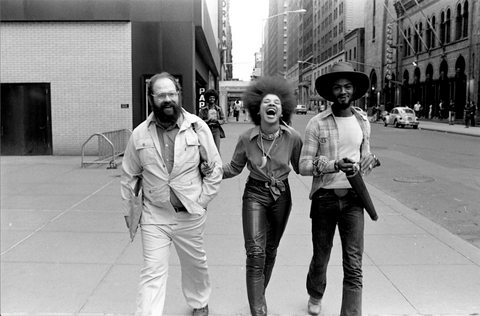
Her 1974 sophomore album They Say I’m Different features a worthy-of-framing futuristic cover challenging David Bowie’s science fiction funk with real rocking soul-fire, kicked off with the savagely sexual “Shoo-B-Doop and Cop Him” (later sampled by Ice Cube). Her follow-up is full of classic cuts like “Don’t Call Her No Tramp” and the hilarious, hard, deep funk of “He Was A Big Freak.” Betty Davis was riding high in the 70s. A new record label, a series of high-profile relationships, and intensely sexualized live performances made her a rising star. It seemed like everything was aligned to take the music world by storm. So Betty and band got back into the studio where she would act as writer, producer, and performer, creating her definitive release–Nasty Gal.
Her entire catalog has now been lovingly remastered from the original tapes by Light in the Attic to sound as ferocious and revolutionary as they did when they first sprung on an unsuspecting world in the early 70s.
PHOTO ABOVE: L to R - Norman Schreiber, Betty Davis, Chuck Mabry, Photo by Robert Brenner
Related:


